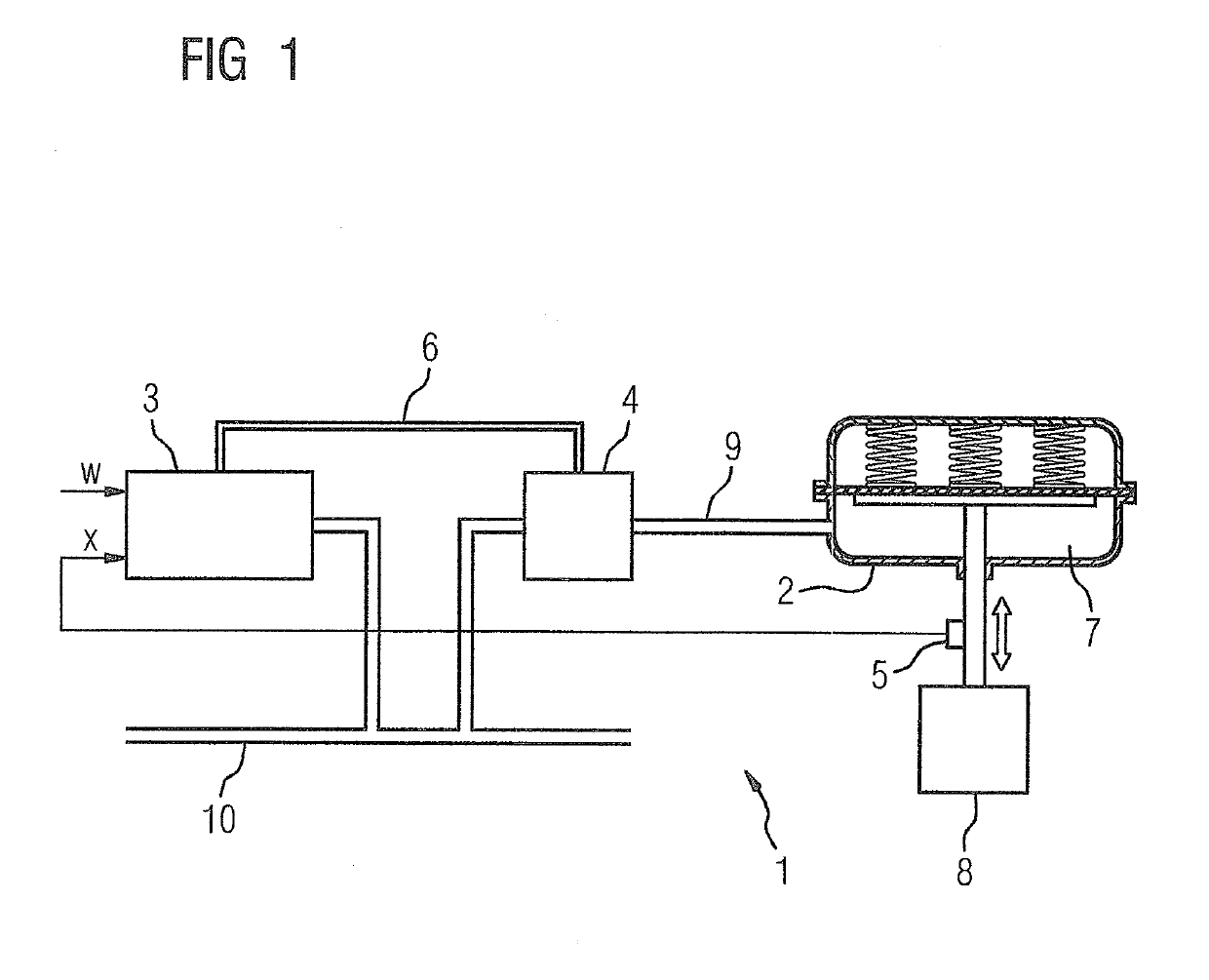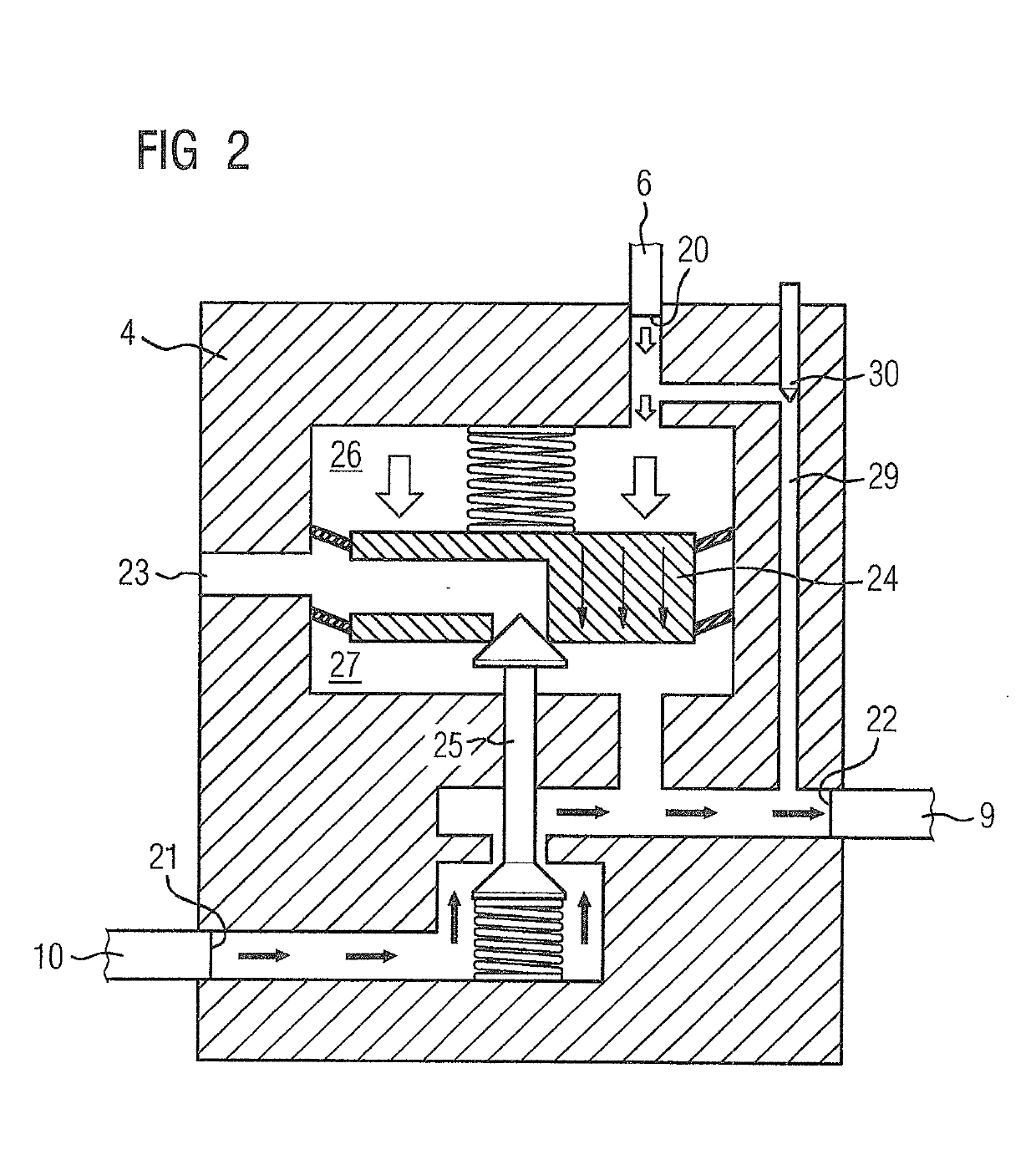Electropneumatic Control System and Position Controller for Such a System
a technology of electropneumatic control and pneumatic actuator, which is applied in the direction of fluid-pressure actuator components, servomotor components, servomotor components, etc., can solve the problems of undesirable behavior, significant additional cost/complexity of feeding the signal back to the electropneumatic position controller, and the flow rate of the valves incorporated, so as to achieve simple and reliable manner, reliably find the setting, and reduce the effect of pressure variations
- Summary
- Abstract
- Description
- Claims
- Application Information
AI Technical Summary
Benefits of technology
Problems solved by technology
Method used
Image
Examples
Embodiment Construction
[0025]An electropneumatic control system 1 for a pneumatic actuator 2 comprises, as shown in FIG. 1, an electropneumatic position controller 3, a volume booster 4 and a position sensor 5 for acquiring an actual value x of the position of the pneumatic actuator 2. The position controller 3 is prescribed a setpoint value w for the actuator position e.g. by an automation device or control system (not shown in FIG. 1 for the sake of clarity). During controlled operation of the position controller 3, the setpoint value w is compared with the currently measured actual value x of the position and, depending on the deviation thus formed, a first pneumatic control signal 6 is generated to reduce the deviation. The exemplary embodiment shows a single-acting pneumatic actuator 2 having a comparatively large pressure chamber 7, and which is used to actuate a valve 8. However, in order to achieve short closing and opening times of the valve 8, the air flow rate that the position controller 3 pro...
PUM
 Login to View More
Login to View More Abstract
Description
Claims
Application Information
 Login to View More
Login to View More - R&D
- Intellectual Property
- Life Sciences
- Materials
- Tech Scout
- Unparalleled Data Quality
- Higher Quality Content
- 60% Fewer Hallucinations
Browse by: Latest US Patents, China's latest patents, Technical Efficacy Thesaurus, Application Domain, Technology Topic, Popular Technical Reports.
© 2025 PatSnap. All rights reserved.Legal|Privacy policy|Modern Slavery Act Transparency Statement|Sitemap|About US| Contact US: help@patsnap.com



